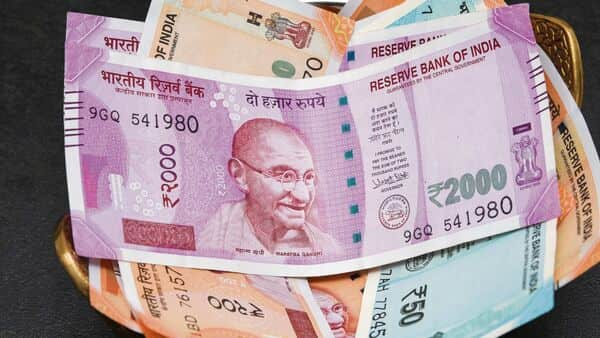[ad_1]
After 50 basis points hike three times in a row, RBI softened in December policy and increased the repo rate by 35 basis points to 6.25%. Hence, so far in FY23, the repo rate has been increased by 225 basis points. Consequently, the standing deposit facility (SDF) rate stands adjusted to 6%, and the marginal standing facility (MSF) rate and the Bank Rate to 6.50%.
However, MPC remained focused on the withdrawal of accommodation to ensure that inflation remains within the target going forward while supporting growth.
On Wednesday, RBI revealed that the average lending rate has gone up by 117 basis points in May-Oct, and the central bank is ready to infuse liquidity into the system. On year-on-year, money supply (M3) expanded by 8.9% as on November 18, 2022, while bank credit rose by 17.2%.
The overall liquidity remains in the surplus. Average daily absorption under the liquidity adjustment facility (LAF) came in at ₹1.4 lakh crore during October-November as compared with ₹2.2 lakh crore in August-September.
How does a 35 bps rate hike impacts EMIs?
Vivek Goel, Co-founder and Joint Managing Director Tailwind Financial Service said, “immediate short-term concern would be on housing demand and impact of higher EMIs on overall consumer discretionary spending.”
Anil Rego, founder, and fund manager at Right Horizons, SEBI Registered Portfolio Management Service provider, explained that typically, during a rising interest rate scenario, the banking sector passes on rate hikes through the floating rate loans while delaying the rate hikes for deposits, benefitting from spreads, and expanding margins.
Rego stated that banks report strong topline growth due to healthy disbursements, higher loan rates, and robust earnings growth on the back of promising advances. A change in stance to dovish going forward by RBI will lead to a rally in the banking segment while a prolonged hawkish stance will impact deposit rates and lead to narrowing NIMs, more so for PSBs.
On the 35 basis points rate hike, Shrikant Shrivastava, Chief Risk Officer, IMGC (India Mortgage Guarantee Corporation) expects EMIs to go up further by another ~3-5%. He said, “as far as loan tenor increase is concerned, I don’t think there is much room for loan tenor increase beyond the 13 years already done till date, due to 190 bps previous increases.”
According to IMGC CRO, Home loan borrowers who have had their home loan original interest rate at 10-11% and initial loan tenors above 25 years would have had no option but to increase their EMI because any attempt to increase their loan tenor would result in loan becoming negatively amortized. Meaning, the original EMI would not be sufficient to cover the monthly interest payable with the existing EMI thereby resulting in the loan principal increasing every month instead of reducing.
It needs to be noted that most banks have fully passed on the repo rate increase of 190 bps to the consumers of home loans to date. Shrivastava added, “this rate hike of 190 bps has resulted in a loan tenor increase of ~ 13 years for borrowers who had initially opted for 20 years loan period, assuming they had taken a home loan at 6% at the time of home purchase. Alternatively, those borrowers who opted for an EMI increase instead of a loan tenor increase have seen their EMI go up by ~20% already.”
Also, Shishir Baijal, Chairman & Managing Director, Knight Frank India added that since the rate hike cycle in May 2022, home loan products have become expensive by around 150 bps before today’s hike. The lending rates have risen significantly, especially for the loans linked to External Benchmark based Lending Rate (EBLR) where there has been a 100% transmission of repo rate. Loan products linked to the MCLR rate are also up by around 108 bps during this period.
This hike will further impact EMIs and reduce home affordability, Baijal said, simply based on the interest rate impact in this rate cycle, the Knight Frank Affordability Index has recorded a cumulative deterioration of an average of 3% across the country.
However, Knight Frank MD also said, “as we have seen since the beginning of the rate hike cycle, latent demand has sustained, albeit with some moderation, in cumulative housing sales since the beginning of the rate hike cycle. The 35-bps rate hike by the RBI may be considered moderate in the current context and therefore considered a welcome move.”
In regards to NBFC, Rahul Chander, MD & CEO of LivFin (Fintech NBFC) said, “the sector has already been negatively impacted with the rate increase cycle during the year, and the near term outlook for NBFCs will be further negatively impacted with this hike. The cost of borrowing will increase further, especially given that a majority of the funding of NBFCs now comes from Banks. This will obviously have a negative impact on their growth and affect downstream borrowers (largely the MSME sector), both in terms of rates as well as the availability of credit.”
Disclaimer: The views and recommendations made above are those of individual analysts or broking companies, and not of Mint.
Download The Mint News App to get Daily Market Updates.
[ad_2]
Source link

